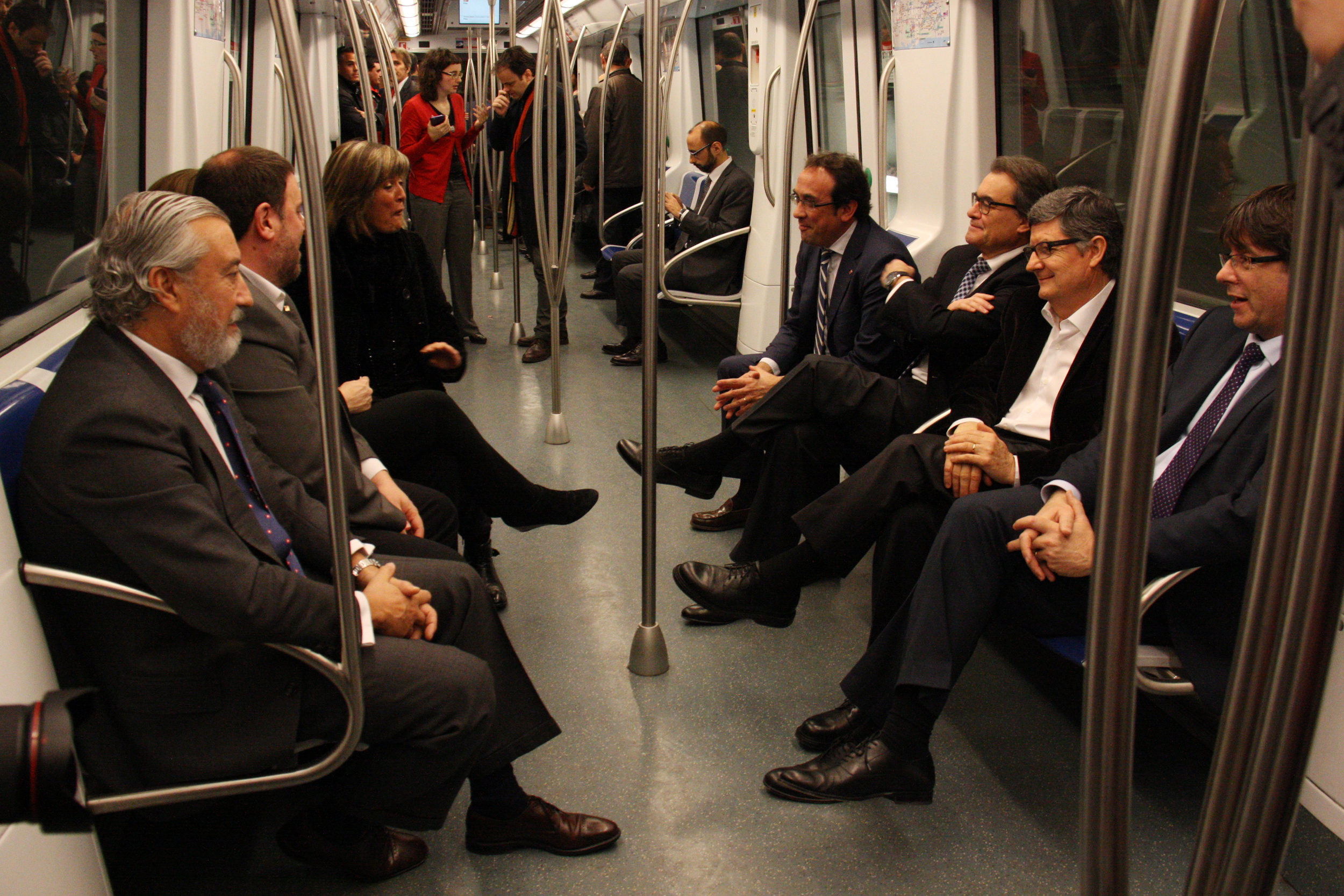Barcelona’s metro finally arrives at El Prat airport
Barcelona’s El Prat airport can now be reached by metro from the city centre. Transports Metropolitans de Barcelona (TMB) has finally opened L9 Sud, a driverless 20-kilometre stretch which connects the city centre with El Prat’s Terminal 1. The project, which was originally set to be completed by 2008, has been awaited with much anticipation, especially by those living on the outskirts of Barcelona or in areas without a metro connection, and is expected to transport nearl 30 million passengers per year. The project itself was initially estimated to cost roughly €3 million, but the Catalan government invested 200 additional million on top of the original budget. Despite these changes, L9 Sud will provide passengers a new, more convenient route to El Prat Airport as opposed to the current Rodalies line. Additionally, it will connect to 15 new stations and three other metro lines.

Barcelona (CNA). – The Barcelona Metro has opened its new line to El Prat Airport after years of anticipation. The new stretch of L9, which is the longest driveless line in Europe, line opens just 10 days before the Mobile World Congress, which is expected to draw thousands of visiting passengers. While Transports Metropolitans de Barcelona (TMB) originally projected that construction of the line would be completed by 2008, delayed funding due to financial setbacks in the Catalan government over the years slowed progress. The project itself was initially estimated to cost roughly €3 million, but the Catalan government invested 200 additional million on top of the original budget. The new L9 Sud line will stretch from Zona Universitària to El Prat Airport, adding 20 km and 15 new stations to the network, making it the longest line. In addition, the new line will give people in Barcelona more ways to get to the airport, and will offer more trains than the current Rodalies line. Nearly 30 million passengers per year are expected to use this new infrastructure.
Catalan President, Carles Puigdemont, together with the Catalan government vice president, Oriol Junqueras, the Catalan Minister for Territory and Sustainability, Josep Rull and former Catalan President, Artur Mas, took part in the maiden trip. Barcelona Mayor Ada Colau and the mayors of the two other neighbouring municipalities which are now connected by this stretch, L’Hospitalet del Llobregat’s mayor Núria Marín and El Prat de Llobregat’s mayor Lluís Tejedor, also attended the event.
In contrast, Spanish Minister for Public Works Ana Pastor wasn’t present, after claiming that the Catalan government had “vetoed” her. The Catalan government denied doing so and explained to the media that an invitation had been sent to Pastor on Thursday. The Spanish Secretary for Infrastructure, Julio Gómez-Pomar, was the only Spanish government representative to attend the event.
Puigdemont lamented Spain’s lack of investment in Catalonia
During the opening, Puigdemont lamented Spain’s lack of investment in Catalonia’s infrastructure. “The [Spanish] State has resigned” he stated and assured that “it put L9’s completion at risk”. Indeed, the Catalan government had to add 200 extra million euros to the 2.8 million euros originally budget for. “It hasn’t been easy at all” admitted Puigdemont, as the infrastructure had to be finished at a time of “limited resources”. “If it wasn’t for us, this infrastructure wouldn’t have been made”, he concluded.
Colau described L9 as “an opportune and essential investment for the country’s present and also for its future”. She emphasised that, due to growing pollution and climate change threats, “public transport is not an option but mandatory”. Colau also wanted to address those neighbours who live in areas with poorer metro connections and stated that Barcelona “owes them” this new infrastructure.
The ticket to El Prat airport’s Terminal 1 will cost €4.50 and train frequency will be 7 minutes on working days, reduced to 4 minutes when big events are taking place.
An infrastructure completed after seven years of tests and delays
Although the line opens more than 7 years after the original projected completion date, the need for a connection between Barcelona’s industrial outskirts and the metropolitan city centres remained present despite setbacks. Though progress was slow through the years of financial crisis, former President Artur Mas assured Barcelona passengers in June 2014 that the new connection to the airport would “breathe life into the economic activity” of the city.
The new line will connect with the red L1 line, the blue L5 line, as well as the green L3 line, and features more automated technology. With its extended length and multiple connections, the line will connect more of Barcelona’s outlying industrial parts to more metropolitan areas, giving more people access to the metro in areas such as Bon Pastor, Llefià, La Salut, Singuerlín, and Sant Cosme, where there previously were no connections. Additionally, it will make travelling from the airport to Barcelona for major international business fairs and events like the Mobile World Congress more convenient.
A line operated with high technology
Indeed, the line will be both more convenient and more technologically advanced for Barcelona’s metro users. TMB reports that the line will run driverless 25 percent of the time it is operating, with its operations being managed remotely from the Control Centre. Although TMB has other driverless lines, the new automated technology used on L9 Sud and L10 is a benchmark for European metro systems, as it will be the longest driverless metro line in Europe. The automated operation system will also offer increased safety and reliability for passengers alongside the convenience of having a new line running to the airport.